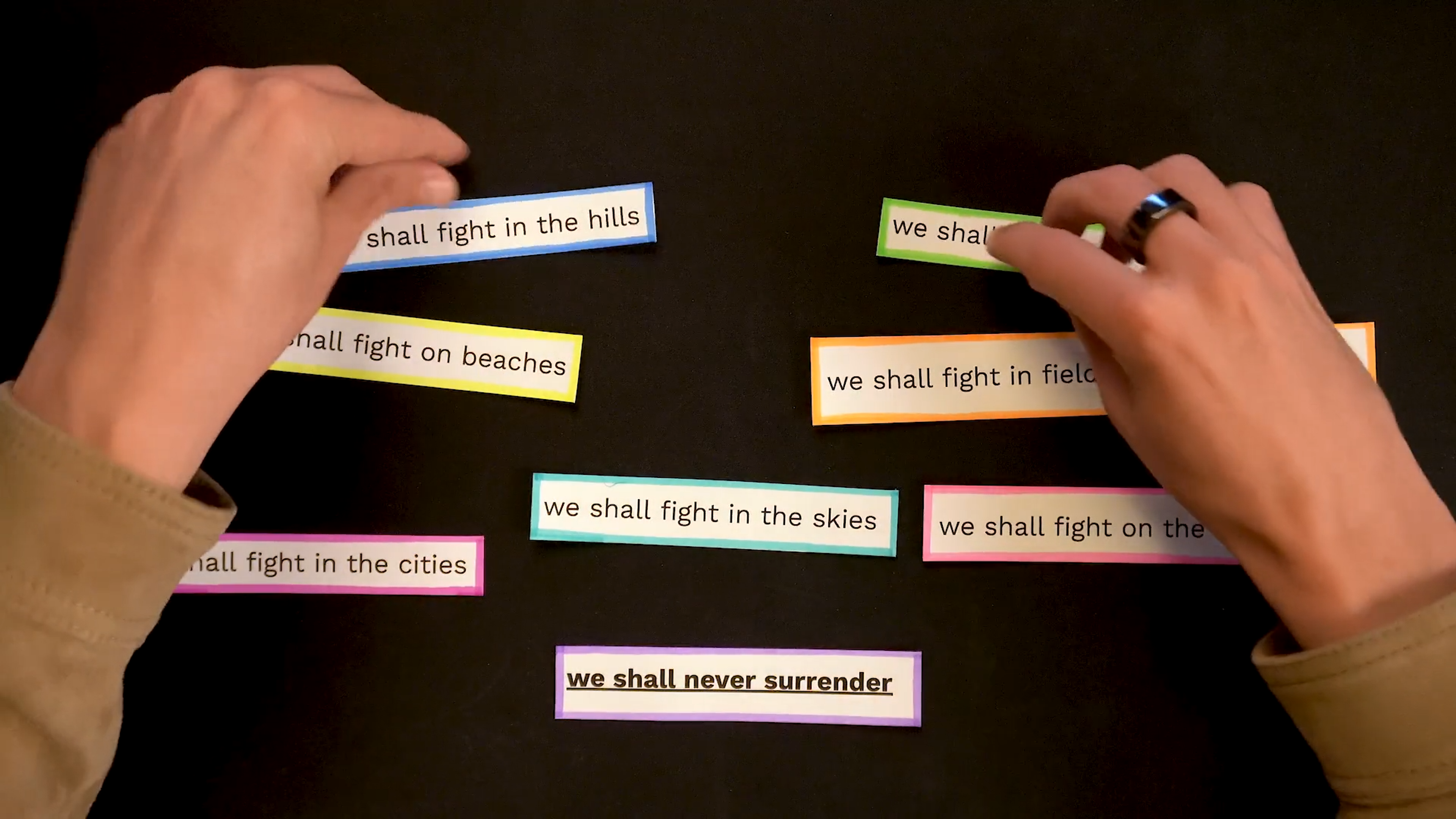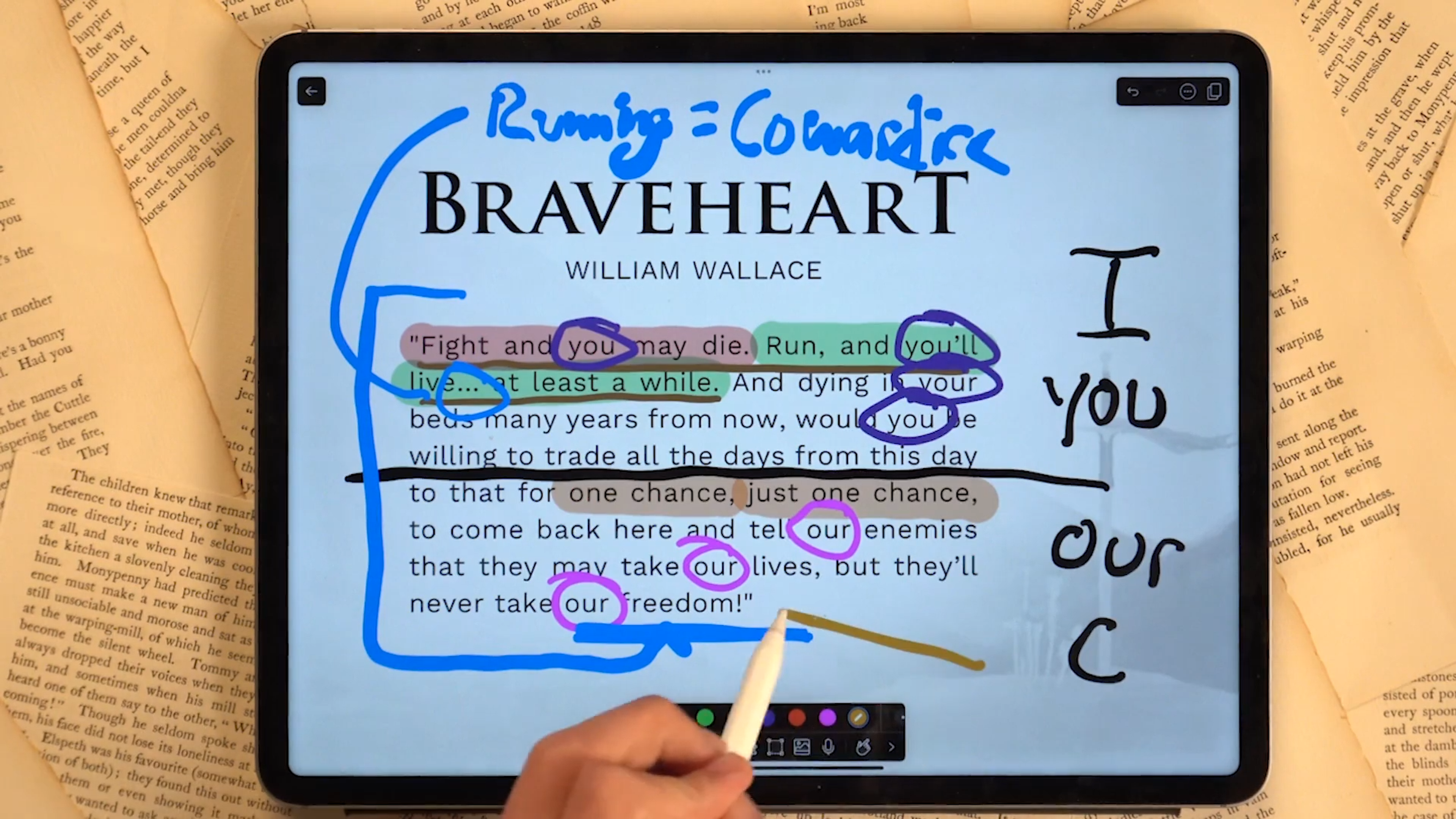Writing Examples
e built this website to celebrate great writing. It’s 100% free. Each article deconstructs a piece of writing from an iconic writer. The goal is to give you X-Ray vision into what makes sentences and paragraphs come alive (so that you can improve at your craft).
Every example has an analysis of why the writing works. Analytical often means dry. But instead of going technical, we’ve gone technicolor. There are text-explainers, summary graphics, and videos that come together to make the writing instruction lively and multi-dimensional.
It’s a place where you can discover how great writing comes together. Where we lift up the hood and see the mechanics in action. It isn’t about giving you a set of rules to follow. It’s about showing the diversity of ways writers approach their craft, so you can develop your own style.

What are some of the articles about? You’ll learn how to describe a party like F. Scott Fitzgerald, how to tell a story like George Orwell, how to write a speech like John F. Kennedy. There are other articles inspired by the likes of Tolkien, James Clear, Winston Churchill, Edgar Allan Poe, Charles Dickens, David Foster Wallace, and Jerry Seinfeld.
Writing Examples is a crusade against the sterility of contemporary writing.
So much of the advice you read says the same thing: “Be direct. Cut the fluff. Get to the point. Stick to short sentences.” And yeah, sure, this advice has merit. It’s useful in certain cases, but the problem is writers take these rules to be universal, which has homogenized writing styles. Even in my own writing, there’ve been so many times where I’ve stripped away my own voice in the name of “correctness.” I regret that.
The truth is, there is no one way to write well, just as there is no one way to speak well. The way you speak in a boardroom is different from the way you speak on a first date, which is different from the way you speak with your childhood best friends. Writing is similar.
Writing Examples is the opposite of Grammarly. It celebrates the wild, wacky, and the weird because it’s the bedrock of personality. The site’s explicit purpose is to inject some High Noon Chutzpah back into the world of writing. To teach you how to write with distinctly human fingerprints in a world that’s about to be flooded with AI-generated content.

But there’s more to the mission. Writing Examples is a protest against today’s Internet, where people spend the majority of their time reading ad-polluted articles and doom-scrolling the same few social media sites. Remember when we used to surf the Internet? When every site was its own wave to ride? Now, we’re like phone-addicted zombies, we mindlessly scroll Twitter, TikTok, LinkedIn, Facebook, or Instagram until we feel bad about ourselves — only to repeat the cycle a few hours later.
Writing Examples is different. Heartfelt writing deserves a heartfelt presentation, so every element of the site has been designed from scratch. Energetically, we wanted to honor the gravitas of classic writing without the sleepiness of a drab old library shelf. We said no to ads. We said no to pop-ups. No hijacking your attention. None of the flat white backgrounds that make the Internet feel so homogenous. And we said no to anything that feels like your 5th-grade English class.
Writing Examples isn’t about what’s trending. It’s about learning from the great writers of times past, most of whom you know, many of whom you probably haven’t taken the time to read.
The ultimate goal is to make Writing Examples a one-stop shop to learn about any kind of writing you can think of.
Now, I dare you to dive into the site and get to work.
David Perell